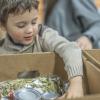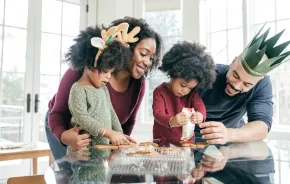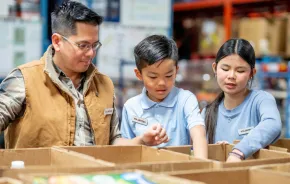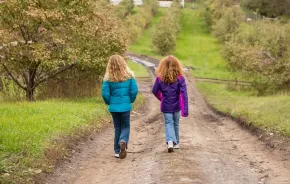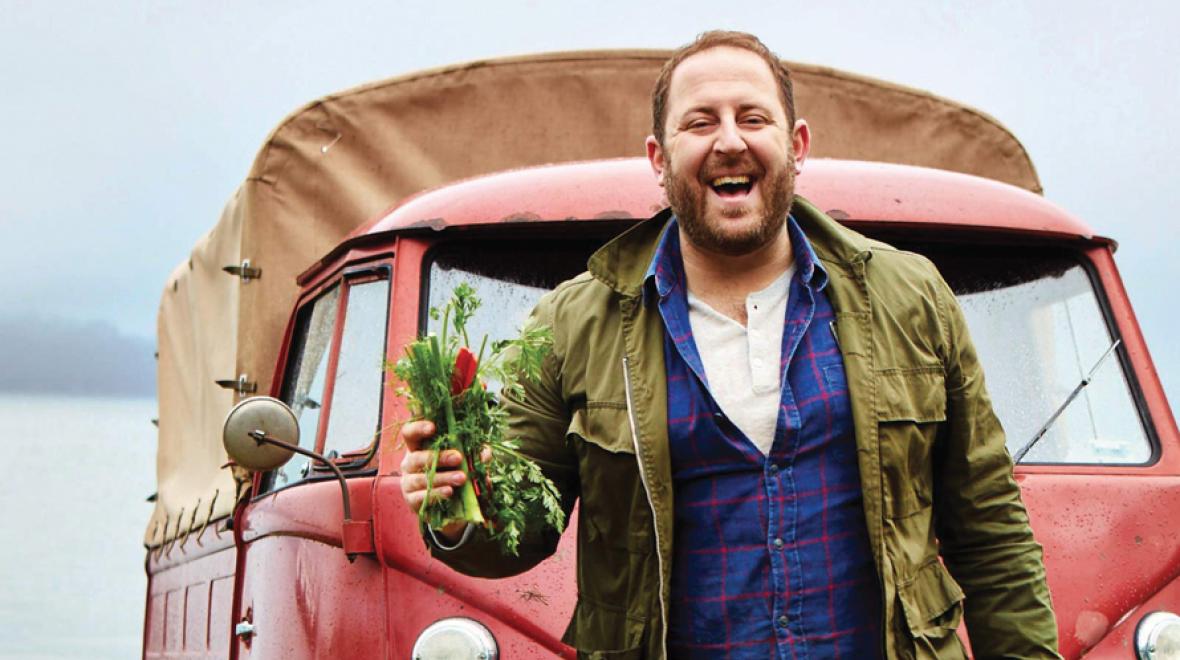
Statistics about the dire economic and environmental impacts of wasted food are unpalatable, to say the least: A shocking 40 percent of the food produced in the United States is unused — this while an unacceptable 49 million households deal with food insecurity every year.
In response, homegrown (Mercer Island-born and -raised) chef and TV personality Joel Gamoran has become one of the most recognizable faces of — and driving forces behind — the zero-waste food movement. As the national chef and principal spokesperson for Sur La Table, he leverages his passion for “cooking scrappy,” love of teaching and talent for making entertaining media to promote his mission to rehabilitate our country’s wasteful food culture — one delicious and deceptively humble food scrap at a time.
After attending cooking school in Italy and earning a restaurant management degree from the University of Connecticut and a culinary arts certificate from the Culinary Institute of America, Gamoran worked in a number of restaurants before landing, at age 24, at Sur La Table. Today, 10 years later, he oversees the content and curriculum for the kitchen retailer’s popular cooking classes, offered nationwide at 85 locations, and hosts “Scraps,” a culinary series which is executive-produced by television host and journalist Katie Couric.
Now in its third season on A&E, the series features Gamoran traveling in his mobile kitchen — a refurbished, Mars-red 1963 Volkswagen pickup dubbed “Pippi” — to food-forward U.S. cities. In each episode, he collaborates with chefs and fellow zero-waste champions to source local ingredients and prepare a pop-up dinner party that deliciously realizes the haute cuisine potential of food scraps.
In October 2018, Gamoran further advanced his mission to empower home cooks to tackle food waste in their own kitchens by publishing his first cookbook, “Cooking Scrappy: 100 Recipes to Help You Stop Wasting Food, Save Money, and Love What You Eat.”
How did your interest in cooking scrappy begin?
I grew up with a wealth of food — too much food — and I think it’s one of the things that kind of drove me to the scrappy movement. In restaurants and in cooking school, you’re not allowed to waste anything. Every scrap, every last bit, matters, and you are taught to use onion peels and chicken bones and the seeds of tomatoes — everything that we maybe normally throw away at home. So, when I got into home cooking at Sur La Table, I looked at our overfilled garbage bowls and I realized that most home cooks were never taught [the scrappy way].
Maybe our grandparents were taught during the Depression how to save food and make the most out of a stale piece of bread or a brown banana, but we weren’t, and so I wanted to kind of bring that mentality back. Make it cool, make it fun.
You should never name a favorite child, but can you pick a favorite scrap?
I’ll go with corncobs as my favorite child. Once you eat the kernels, you can cook the cobs in butter for a long period of time to make corn butter, which you can slather on fresh ears of corn, put in polenta or toss into pasta. You can also use those corncobs to make a stock for a sweet corn risotto. It’s just incredible.
What’s your favorite MacGyver use of a kitchen implement?
I love flipping a Le Creuset or a cast-iron skillet upside down and using the bottom of it as a pizza stone. I think that’s what the whole movement is about. It’s not just about ingredients. It’s about ingenuity, using every tool at your disposal and just getting every last drop out of everything you have.
Congratulations! I hear you will be a new father soon. Do kids and cooking scrappy mix?
Scraps make for amazing kid food! We filmed an episode in Detroit, where we cooked a scrappy meal for kids, and it was probably my favorite episode. The kids got it immediately. I explained to them that there are children around the country who go to bed hungry, and meanwhile, we have all this leftover food. It really sunk in with them.
Do you have any suggestions for making family meal prep scrappier and less stressful?
Well, first of all, on social media if you take a picture of your fridge and hashtag #scrapmyfridge, I receive a notification, and within 24 hours I will respond with what you should make.
I’m not a parent yet, but the second thing I recommend is putting a little structure behind [meal planning]. So, for me, the second part of Sunday is completely blocked out for getting groceries, coming home and building bases. I usually cook up grains, like farro, brown rice and whole wheat pasta; then I cook proteins, like chicken and salmon. Vegetables usually cook within three to four minutes, so they get prepared day of. … So, it’s getting those two bases — the protein and the carbohydrates — out of the way, and just being disciplined, and that makes the rest of the week so easy.
It’s hard in today’s age where we have unlimited everything to be like, “You know what? I’m going to save these overripe avocados.” I’m not perfect at it either. Everyone always thinks because I’m the face of this movement I must have a waste-free kitchen. Not at all. I get better at it every day. But you know why this is ultimately going to work? That guilt is going to catch up with us.
What is your favorite recipe from your new cookbook?
The CSALT [chicken skin, avocado, lettuce and tomato] sandwich is pretty incredible. It is my version of a BLT, but it’s made with chicken skin. I think a lot of people don’t realize that you can go to the grocery store and buy a pack of chicken skin for, like, $2.30. I crisp the chicken skins in the oven, like bacon, but they’re way healthier than bacon.
You can use chicken skin and save money and the planet by eating more of what you already have. You can go to any grocery store, whether it’s New Seasons or QFC or Whole Foods, and they will get you this stuff, and it’ll be for dirt cheap. They will get you chicken skin for dirt cheap. They will get you chicken bones for dirt cheap — because nobody wants them.
I also love the recipe for spent coffee grounds ice cream. I always tell people to add just a pinch of leftover coffee grounds into anything with chocolate — it really takes the dish from an 8 to a 10.
What countries are doing a better job at cooking scrappy?
I don’t want to put down America, but we are not the best at it in the world — we’re actually the worst at it. The worst food-waste problem-makers in the world are all first world countries — the U.K., the U.S., China — countries that have a lot of money and a lot of resources.
When you go to France, when you go to Italy, when you go to Asia, they eat the whole fish. They use the bones for soup, they eat seafood broth the next day. Go to Tuscany and it’s all about bread crumbs, and it’s all about cheap cuts of meat to make ragù — their grandmas’ culture never went away, it became cool. For us, our grandmas’ culture went away, and so [the question is] how do you reinvigorate that?





